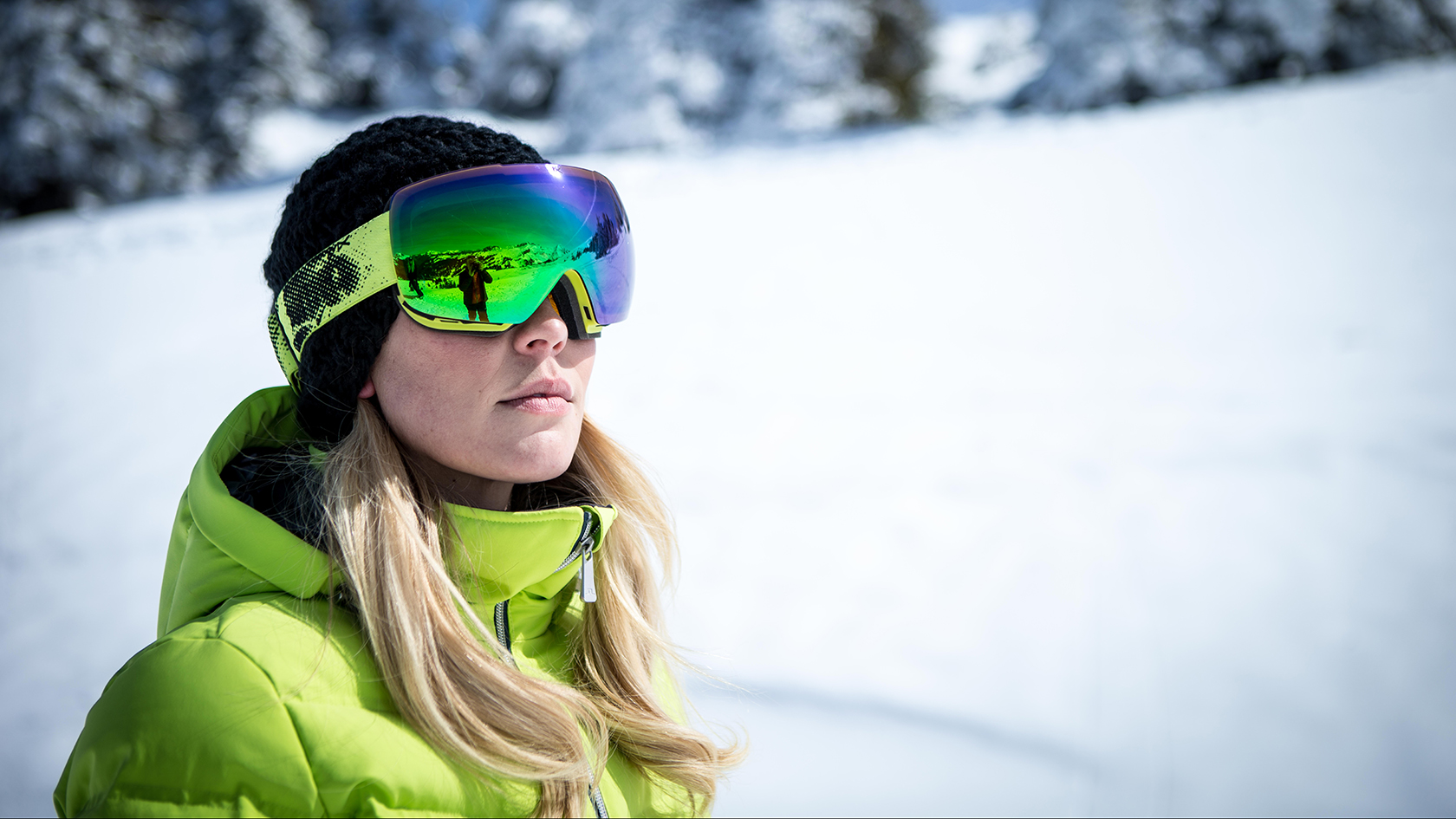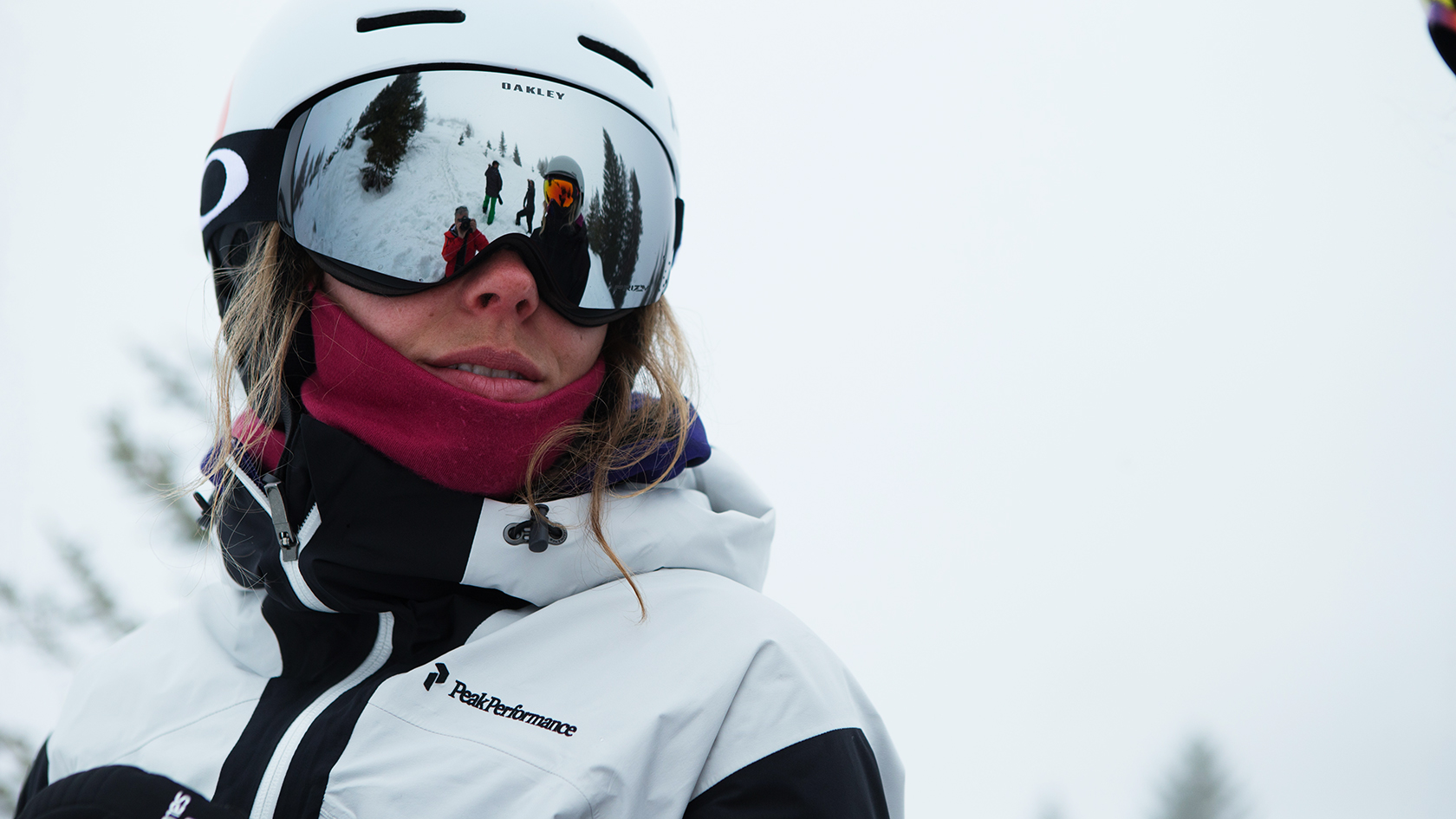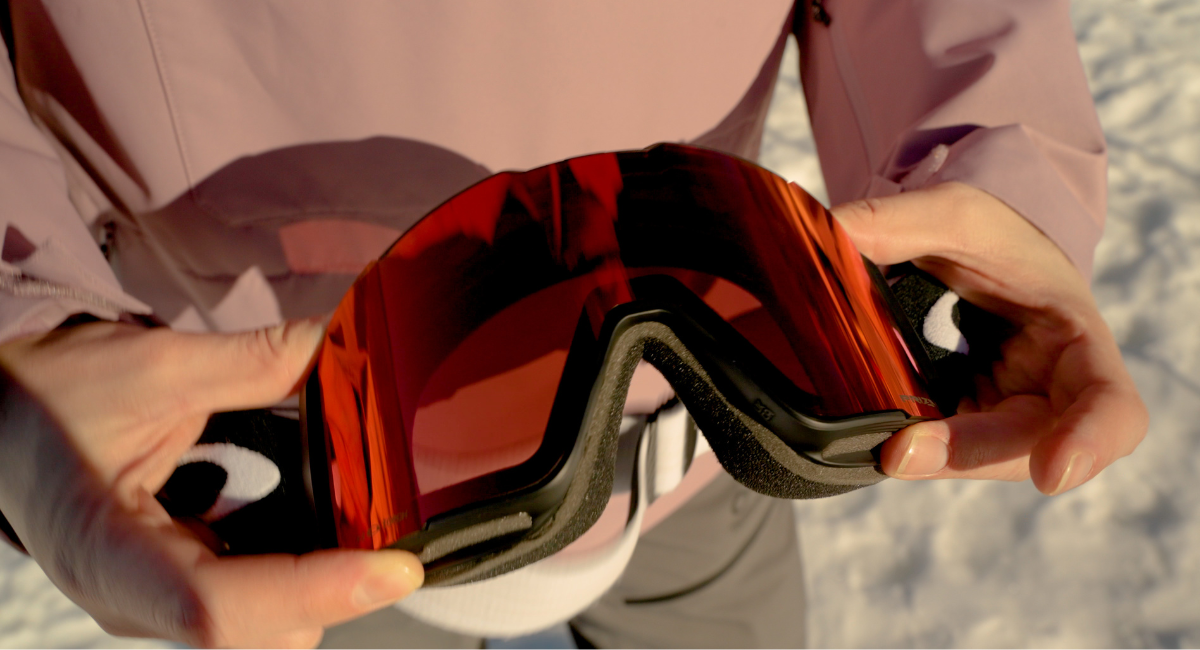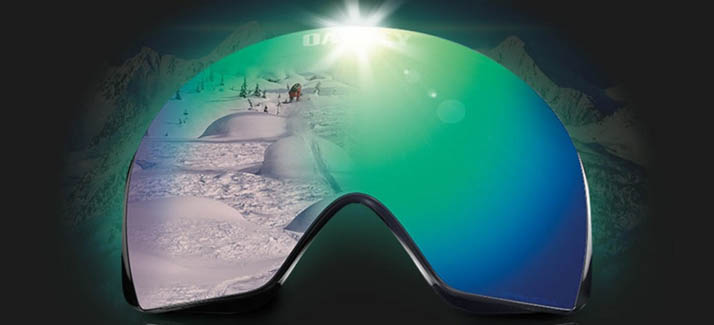Goggle Buying Guide
There’s more to buying goggles than meets the eye (pun totally intended). When you’re looking to upgrade your eyewear, you should consider lenses, tilt, fit and lens tech too. Offering improved definition and visibility as well as protection for your face and eyes, no ski or snowboard set-up is complete without a pair of goggles.
If you’re on the mountain all day, your goggles need to fit your face comfortably to provide maximum performance. Not forgetting you need to look great too. Here’s our guide to finding the right goggles.
Why Are Goggles Essential for Skiing and Snowboarding?
Skiing and snowboarding expose you to a range of challenging weather conditions, from bright sunshine and reflective snow to gusty winds, blowing snow, and freezing temperatures. Goggles are specifically engineered to shield your eyes from these elements. They provide a barrier against wind and snow, preventing irritation and discomfort, while also offering crucial protection from harmful ultraviolet (UV) rays, which are significantly stronger at higher altitudes. The reflective nature of snow can amplify UV exposure, making quality goggles an absolute necessity for eye health.
Beyond protection, goggles are designed to improve your vision. They reduce glare from the sun, help you see contours and obstacles on the slopes, and maintain visibility in changing weather. Advanced lens technologies ensure you can spot changes in terrain and react quickly, which is essential for both safety and performance.
Goggle Fit and Comfort: The Foundation of Performance
A well-fitting goggle should sit comfortably on your face, creating a secure seal without causing pressure points or discomfort. The foam padding around the frame should be soft and plush, providing insulation and cushioning against your skin. The strap needs to be adjustable so you can find the perfect tension—too tight, and you’ll feel discomfort; too loose, and the goggles may shift or let in cold air and snow.
Different brands and models are shaped to accommodate various face types. If you have a smaller or larger face, or if you wear prescription glasses, it’s especially important to try on multiple options to find the best fit. Many brands now offer “Asian fit” or “low-bridge” models designed for those with flatter nose bridges, ensuring a snug fit and preventing gaps that can let in cold air.
Tip: Always try goggles on with your helmet before purchasing. The best goggles will sit flush against your helmet, eliminating gaps and ensuring a seamless transition between the two pieces of gear.
Lens Types: Cylindrical vs Spherical vs Toric
The shape of your goggle lens plays a significant role in your field of vision, optical clarity, and overall comfort.
Cylindrical Lenses
Cylindrical lenses feature a horizontal curve but are flat vertically. This traditional design is cost-effective and provides good performance for most recreational skiers and snowboarders. However, because the vertical surface is flat, there can be more glare and less peripheral vision compared to spherical lenses.
Spherical Lenses
Spherical lenses curve both horizontally and vertically, closely mimicking the shape of the human eye. This design offers a wider field of view, less distortion, and improved optical clarity. Spherical lenses are particularly favoured by advanced skiers and snowboarders who demand the best performance and comfort from their gear. While they are generally more expensive, the investment is often worth it for those who spend a lot of time on the mountain.
Toric Lenses
Toric lenses are a relatively new innovation, blending elements of both cylindrical and spherical designs. They offer excellent optics and improved peripheral vision, making them a versatile choice for a wide range of conditions and preferences.
Lens Technology and Tints: Matching Your Goggles to the Conditions
Goggle lenses come in a variety of tints and technologies, each designed to optimise visibility for different weather and lighting scenarios.
Visible Light Transmission (VLT)
VLT measures the percentage of visible light that passes through the lens. A lower VLT (e.g., 10–20%) is ideal for bright, sunny days, as it blocks more light and reduces glare. A higher VLT (e.g., 50–80%) is better for overcast or low-light conditions, allowing more light to reach your eyes and improving visibility.
Lens Tints and Their Uses
Different lens tints filter light in unique ways, each suited to specific conditions:
- Yellow and Rose Tints: These are best for overcast, snowy, or low-light conditions. They enhance contrast, making it easier to see contours and changes in terrain.
- Orange, Gold, Blue, and Grey Tints: These are ideal for sunny days. They reduce glare and provide excellent colour definition.
- Amber and Rose Tints: These are versatile all-rounders, performing well in a range of light conditions.
- Clear Lenses: These are best for night skiing or extremely low-light situations.
Photochromic Lenses
Photochromic lenses automatically adjust their tint based on the amount of available light. This makes them an excellent choice for skiers and snowboarders who encounter changing conditions throughout the day. With photochromic lenses, you don’t need to swap lenses—the goggles adapt to the environment for you.
What Are Magnetised (Magnetic) Lenses and Are They Worth It?
Magnetised lenses use a magnetic system for quick and easy lens swaps, allowing you to change lenses in seconds—even while wearing gloves. This feature is especially useful if you frequently encounter changing weather conditions or want to carry spare lenses for different light scenarios. Magnetised systems are praised for their convenience and are available from many leading brands. They are considered a worthwhile investment for those who value adaptability and ease of use on the mountain.
Interchangeable Lenses
Interchangeable lenses are a game-changer for skiers and snowboarders who face a variety of weather conditions throughout the day. With most modern goggles, you can swap out lenses quickly and easily, thanks to clip-in or magnetic systems. This means you can carry a spare lens for bright conditions and another for overcast or low-light situations, all without needing to bring an extra pair of goggles.
Many top brands now offer goggles with interchangeable lenses as standard, often including two lenses in the box—one for sunny days and another for cloudy or snowy weather. Some advanced models even feature photochromic or electrochromic lenses, which automatically adjust their tint based on the available light. This innovation means you can enjoy optimal visibility from sunrise to sunset, regardless of how the weather changes.
Check out some of our top brands for variable lens technologies:
Anti-Fog and Ventilation Features: Keeping Your Vision Clear
Fogging is one of the most common frustrations for skiers and snowboarders. When warm air from your face meets the cold lens, condensation forms, obscuring your vision and potentially compromising your safety.
Double-Layer Lenses with Anti-Fog Coating
Most modern goggles feature double-layer lenses with an anti-fog coating. How Do Anti-Fog Goggles Work? Anti-fog goggles use advanced technologies to prevent condensation and maintain clear vision. Most feature double-layer lenses with an anti-fog coating on the inner surface, which insulates the lens and repels moisture5. Some models also include ventilation systems to improve airflow and further reduce the risk of fogging. Avoid wiping the inside of the lens, as this can damage the anti-fog coating. Proper care and storage will help maintain the effectiveness of these features over time.
Tips to prevent fogging
Here are a few tips to keep you from fogging up on the mountain:
- Keep moving: movement creates airflow in the goggles, preventing the lenses from fogging up
- If your goggles become snowy, shake off the excess - don’t wipe it off as this may damage the film on the lenses
- Keep the vents free of snow
- Avoid putting goggles on your head as your body heat will cause them to fog faster
- If your goggles become damp, dry them out before your next session
If you’re still undecided, visit us in-store and our snowsports experts will get you geared up for this season with a wide range of goggles and lenses.
Ventilation Systems
Ventilation is another critical factor in preventing fogging. Look for goggles with strategically placed vents that allow air to circulate while keeping snow out. Some models feature adjustable vents, letting you customise airflow based on the conditions.
Tip: Avoid covering the vents with scarves or neck warmers, as this can restrict airflow and increase the risk of fogging. Never wipe the inside of your goggles with rough materials, as this can damage the anti-fog coating.
Helmet Compatibility and Sizing: Ensuring a Seamless Fit
Your goggles should work harmoniously with your helmet. A good fit means no gaps between the goggle frame and the helmet, which helps keep out cold air and snow. Most brands provide size guides to help you match your helmet to the right goggle size.
If you wear prescription glasses, look for OTG (Over The Glasses) models. These goggles are designed with extra space to accommodate your glasses comfortably, ensuring you can see clearly without compromising on fit or comfort.
What Are the Benefits of Prescription Inserts vs. OTG Goggles?
Prescription inserts are custom lenses that fit inside your goggles, providing clear vision without the bulk or discomfort of wearing glasses underneath. OTG (Over The Glasses) goggles are designed with extra space to accommodate prescription glasses, but may not offer as precise a fit or as clear a field of view as inserts. Many experts recommend prescription inserts for the best comfort, clarity, and anti-fog performance.
Goggle care
Use these simple tips to keep your goggles in tip-top condition:
- When taking your goggles off, never place them face down on a hard surface. Rest them on the foam side with the lens facing up to prevent scratching
- When cleaning your goggles, always use the lens cloth provided to prevent scratching and removing the anti-fog coating
- Allow your goggles to dry before storing them in your pack
- Keep your goggles stored in a soft bag when you’re not using them
- Do not leave your goggles to dry in direct sunlight
How Often Should I Replace My Goggles?
Goggles should be replaced if the foam becomes worn, the lens is scratched or damaged, or if you notice persistent fogging despite proper care. High-quality goggles can last several seasons with proper maintenance, but it’s important to inspect them regularly for signs of wear and tear. Investing in a reputable brand and following the manufacturer’s care instructions will help extend the life of your goggles.
Goggle fit problems and solutions
If you find any problems with your goggles, try to locate the area causing the discomfort. Here are some common pressure points and how to prevent them:
Pressure On The Outer Eye Socket?
The goggle is too narrow, find a model with a wider frame.
Pinching On The Bridge of Your Nose?
Tighten the strap in order to secure the goggles higher on your face. If that doesn't help, try a goggle with a different bridge contour.
Gap On The Bridge of Your Nose?
Loosen the strap and position the goggles lower down your face. If you're still having trouble, try a goggle with a larger bridge.
Pinching On The Temple?
Try loosening the strap a little to relieve the tension or try a wider pair of goggles.
Choosing the right ski or snowboard goggles is a critical step in preparing for your mountain adventures. By understanding the importance of fit, lens technology, anti-fog features, and helmet compatibility, you can select a pair that will keep you comfortable, safe, and performing at your best. Whether you’re a beginner or an experienced rider, the right goggles will help you see every detail of the slope and enjoy every moment of your journey.
Discover Your Perfect Gear
Find your perfect pair of goggles with our incredible men's and women's ski goggles and snowboard goggles collections at Snow+Rock.
FAQs
Cylindrical lenses have a horizontal curve but are flat vertically, offering good performance at a lower price. Spherical lenses curve both horizontally and vertically, providing a wider field of view, less distortion, and superior optical clarity. Toric lenses blend elements of both designs for versatility.
Choose goggles with double-layer lenses, anti-fog coatings, and effective ventilation systems. Avoid covering the vents with scarves or neck warmers, and never wipe the inside of your goggles with rough materials.
- Sunny conditions: Dark tints like blue, grey, gold, or orange.
- Cloudy or low-light conditions: Yellow, rose, or clear tints.
- All-round performance: Amber or rose tints.
Yes, many goggles are designed as OTG (Over The Glasses) models, providing extra space to accommodate your glasses comfortably.
Check the size guide provided by the goggle or helmet manufacturer. The goggles should fit snugly against your helmet without any gaps.
Replace your goggles if the foam becomes worn, the lens is scratched or damaged, or if you notice persistent fogging despite proper care. High-quality goggles can last several seasons with proper maintenance.
Kids’ goggles should be lightweight, comfortable, and easy to adjust. Look for models with soft foam, flexible frames, and lenses suited to the conditions your child will encounter.
Related articles

Let us know you agree to cookies
We use marketing, analytical and functional cookies as well as similar technologies to give you the best experience. Third parties, including social media platforms, often place tracking cookies on our site to show you personalised adverts outside of our website.
We store your cookie preferences for two years and you can edit your preferences via ‘manage cookies’ or through the cookie policy at the bottom of every page. For more information, please see our cookie policy.












